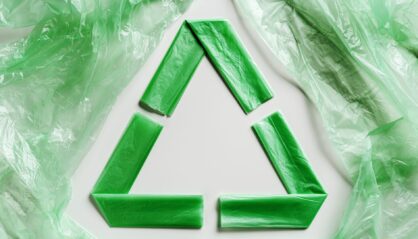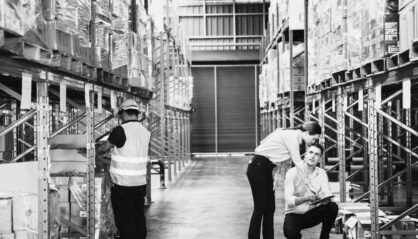The Future Of Sustainable Workwear

The importance of sustainability and environmental responsibility in the workplace has never been more significant than it is today.
It’s going to take the collaborative effort of individuals and businesses across the globe to help reduce the effects of climate change for generations to come.
There are range of activities that businesses can engage in to become more environmentally conscious and sustainable, such as:
- Measuring and addressing their carbon footprint
- Implementing employee engagement platforms for sustainability
- Ensuring there are adequate recycling facilities at work
- Engaging in considerate waste management
- Removing single use items from the workplace
- Reducing energy usage through solutions like motion sensor lighting
- Encouraging car sharing
- Embracing flexible working
- Reviewing the carbon footprint of their supply chain
However, an often overlooked area where businesses can make significant improvements in their environmental responsibility, is in reviewing the sustainability of their work uniforms.
In this article, we’re going to take a look at the increasing demand for sustainable uniforms, current innovations that might shape the future of sustainable workwear, and how JSD can help businesses align the design and manufacture of their work uniforms with their sustainability goals. .
The rise in demand for sustainable and eco-friendly uniforms
The clothing industry remains a significant contributor to environmental issues, generating a significant amount of wastewater, greenhouse gas emissions and microplastic pollutants.
Did you know it’s estimated that almost 10% of all global emissions are caused by the manufacture of clothing? Or that around 60% of all clothing is made from synthetic fibres, which can cause microplastics to enter our oceans when garments are washed?
The good news is that things are moving in the right direction, with the demand for more environmentally friendly, sustainable clothing more than doubling in the period between 2013 and 2023.
But there is more that can and should be done in the clothing industry.
Since the 1990s, JSD has been catering to the growing need for companies to align the design and manufacture of their staff uniforms with their environmental objectives.
Our thoughtful approach ensures that your uniforms not only reflect your brand’s visual identity but also meet your sustainability goals.
Current trends in sustainable clothing materials
There are a number of sustainable clothing materials that have seen an increase in use over recent years, and actually feature in many of the uniforms that JSD design and manufacture:
Organic cotton
Organic cotton is grown without the use of harmful pesticides, and uses considerably less water than traditional cotton – making it a far more sustainable solution.
To put this in context, it’s estimated that the use of organic cotton can deliver a 46%
reduction in climate change potential compared to non-organic cotton.
Organic cotton is being used already in many JSD uniform designs.
Recycled Cotton
Recycled cotton is created by reprocessing cotton waste from old clothing into new cotton fibre, which can be used to make new garments.
This approach significantly reduces the environmental footprint compared to traditional cotton, or even organic cotton – with reduced water consumption, and no need for the use of fertilisers and pesticides.
Recycled cotton also has the added benefit of waste reduction, as it prevents old cotton garments from ending up in landfills.
Bamboo
Bamboo fabric is another material that is gaining popularity in sustainable workwear design.
Bamboo grows quickly and doesn’t need a large amount of water and pesticides in its production – making it environmentally friendly compared to other materials.
Bamboo fabrics are highly absorbent, making them ideal for active workwear due to their moisture-wicking properties.
Uniform material innovations
It’s really encouraging to see so much innovation in the development of sustainable, eco-friendly materials for the clothing industry.
There are a number of innovative new materials that are currently being trialled by leading consumer clothing brands.
These materials haven’t made their way into our uniform design and manufacture process yet, but we’re always evaluating the potential application of new materials and approaches, and will embrace them when it’s viable.
Mylo
Mylo is a sustainable leather alternative which is made from the root structure of mushrooms, through a process of growing mycelium cells in a controlled environment.
It offers the durability and feel of leather without the environmental impact, only using a fraction of the resources needed for traditional leather production.
We can see this innovative material being part of sustainable workwear design for any brands that are looking for accessories such as bags.
Bananatex
Bananatex is a durable, sustainable fabric made from banana plants. It’s fully biodegradable and offers an eco-friendly alternative to synthetic fabric in sustainable workwear design.
In consumer markets, Banantex has already been used by leading brands such as Stella McCartney and H&M in the manufacture of accessories and clothing.
Kintra
Kintra is a biodegradable polyester alternative, offering the durability and softness of polyester at the same time as addressing environmental issues like microplastic pollution.
Kintra is made from 100% bio-based inputs, which has the additional benefit of a significant reduction in emissions during manufacture compared to traditional polyester.
With the common usage of polyester in uniform design, Kintra could be a future game-changer in the world of sustainable workwear.
The JSD journey to net zero
At JSD, we’ve been committed to sustainability since our launch in the 1990s.
Our approach to environmental responsibility covers all stages of the workwear lifecycle, including design, sourcing, manufacturing, distribution, and end-of-life disposal.
Recycling policies
We always look at the viability of using recycled materials in our uniform designs, and also offer a range of solutions for helping our clients manage excess or end-of-life uniform items as part of our commitment to the circular economy.
For example, in our partnership with Jet2, our uniform design process included the use of recycled uniform fabrics, the reduction of garment packaging and replacement with recycled materials, and a system for taking back uniforms at the end of the holiday season to extend their lifespan.
Net zero goals
As a business we’ve set ambitious net-zero goals, including achieving B Corp Certification by 2026, reducing Scope 1 & 2 Greenhouse Gas emissions to Net-Zero by 2040, and Scope 3 emissions by 2050.
Our mission is to produce a minimum of 80% of our garments using sustainable materials by 2025 and to offer traceability and end-of-life solutions for all products in the same timeframe.
How JSD can help your business achieve sustainability goals
Sustainability and environmental responsibility are becoming increasingly important for businesses across all sectors.
To have a truly effective environmental strategy, businesses need to implement a holistic approach that looks at all areas of their supply chain and operations – including the design and manufacture of staff uniforms.
JSD has been at the forefront of integrating sustainability into uniform design since the 1990s.
From research and design to development, manufacture, and distribution, we can help ensure that every aspect of your uniform is sustainable and ethical – and benefits both your team and the environment.
So if you’re looking to align your staff uniforms with your environmental objectives, speak to JSD today.





